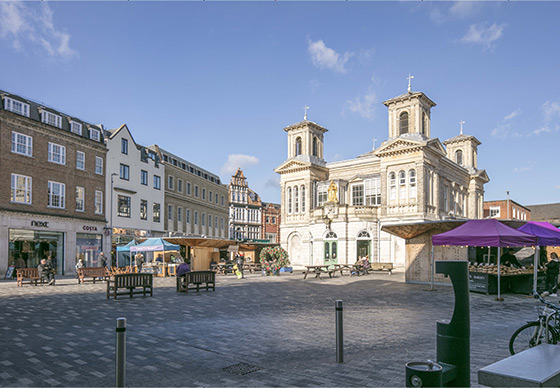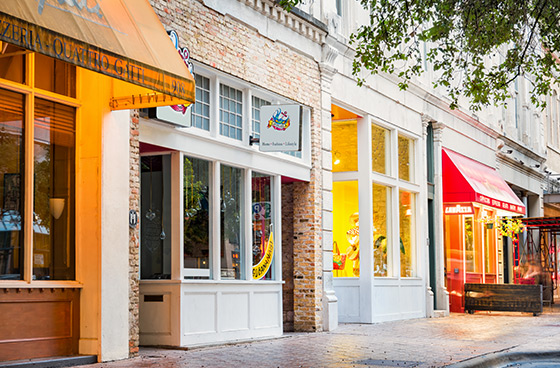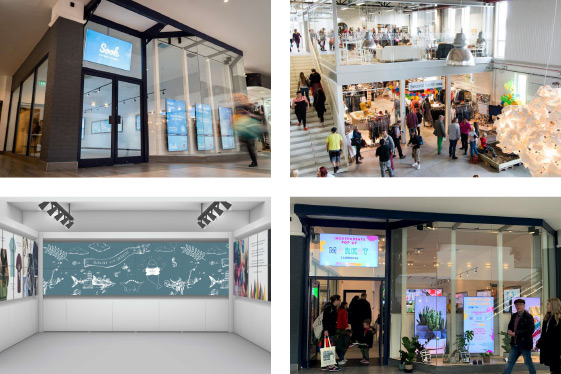
What role does ‘sustainable development’ and the recent Government amendments to the planning system have within the Land-Use Planning process for re-purposing retail and leisure spaces?
Sustainable town centre development
The term ‘sustainable development’ has long been at the core of plan making and decision-taking. The NPPF, originally published in 2012, elevated this principle establishing a ‘presumption in favour of sustainable development’. The term dates back to the U.N’s 1987 publication ‘Our Common Future’, which defined ‘sustainable development’ as:
“…development that meets the needs of the present without compromising the ability of future generations to meet their own needs.”
It is however, a common misconception that the term relates exclusively to environmental objectives when it is axiomatic that all development will have an impact.
National planning policy recognises the multi-faceted approach to delivering sustainable development by setting economic, social and environmental considerations as the overarching objectives to ensure sustainable delivery. Policy is clear that the three considerations are interdependent and need to be pursued in mutually supportive ways. In short, each element has an equally important role for delivering long term sustainability in development and our communities as a whole.
As the requirement for physical space reduces, existing retail and leisure developments are particularly well-placed to be re-purposed or redeveloped to provide alternative residential, leisure, employment, commercial and community uses that accord directly with the ‘multi-strand’ nature of sustainable development.

Town centres in particular display strong characteristics to successfully deliver sustainable development. They are well-connected locations that have benefitted from hundreds of years of investment in transport, energy , service and technology infrastructure. They are located centrally within the communities that they serve, providing direct access to social infrastructure and employment opportunities. Town centres benefit from a ‘town centre first’ approach to spatial planning and are classified as previously developed (‘brownfield’) land meaning that they can help reduce pressure on more sensitive locations (such as ‘Green Belt’).
Town centres are therefore locations that promote opportunities to deliver sustainable development in Spatial Planning terms as they:
- Are accessible by sustainable modes and reduce the need to travel;
- Reduce the pressure to deliver development on greenfield land;
- Minimise the use of new materials by maximising the re-use of existing buildings;
- Offer natural potential for higher density development; and
- Maximise the potential to use existing, centralised energy and technology infrastructure.
It is therefore not surprising that the UK planning system offers a strong framework of support for development in town centre locations. However, it doesn’t end at town centres.
The re-purposing or redevelopment of low-density, single use commercial sites outside town centres has also been identified as an opportunity to deliver more sustainable forms of development. Retail and leisure parks in particular have been identified as having potential to create new, mixed use communities. Maximising the potential of existing brownfield land within urban areas for new commercial, residential and community floorspace accords directly with the objective to deliver ‘sustainable development’. Procuring a successful mix of land uses is equally important at the micro (site by site) as well as the macro (town or Borough) level in order to deliver successful places and sustainable development.
Often, the focus has been on large-scale regeneration and how that meets key sustainable objectives by delivering development that is well-served by existing infrastructure and on brownfield land.

Flexible Use Classes
However, existing buildings are incredibly important to delivering sustainable development and are at the forefront of re-purposing initiative. The Government took a significant step forward on 1 September 2020 to support the re-use and re-imagining of all retail and leisure floorspace with the introduction of a new Use Class Order in England that provided a radical shift towards flexibility and supports the re-purposing of existing buildings.
The legislation revoked well established Use Classes (A1-A5, B1, D1 and D2) and created a new Use Class E covering all ‘Commercial, Business and Service’ uses. The legislation is intended to reflect the reduced reliance on ‘retail’ for our high street and the importance of a wider variety of commerce, business and services to the ongoing success of town centres. The benefit of a single classification covering such a wide range of commercial uses is the flexibility it creates in respect of the ability to re-use and re-imagine existing retail and leisure floorspace. Changing between operations within the same Use Class is not ‘development’ as defined and therefore does not require planning permission.
It follows that, in principle, a retail unit can change to a restaurant, office, gym, medical centre or a nursery without the requirement to submit an application. This reduces the risk and uncertainty, time delay and cost of navigating the planning system which can act as a barrier to re-use. The new provisions also allow for a mix of uses across individual buildings (i.e. floor by floor or suite by suite) and flexibility within individual premises. For example, a unit could be a yoga studio in the morning, a retail unit during the day and a restaurant in the evening.
The flexibility introduced by the changes to the Use Class Order help to establish a framework that supports the reimagining of our retail places and creates the basis for a more sustainable future. A flexible planning framework can provide the adaptability required to keep pace with existing and future commercial sectors.
There are examples of new operators that are ideally suited to benefit from the new Use Class Order and its provisions. Sook is an operator that offers entirely customisable physical spaces which can be used for a myriad of different uses. The walls of its premises comprise a series of digital screens which can be uploaded with visual content to transform the appearance and feel of the space. Premises can be hired by the hour or for longer terms and can support any retail, leisure, business or community functions. Its premises embody sustainable development given their ability to adapt to meet different use requirements with minimal consumption of time, cost and natural resource.
The new Use Class system is a strong endorsement by Government that re-using and re-imagining existing retail and leisure buildings is very much at the heart of delivering ‘sustainable development’. Not only does it accord with the aspiration to make best use of existing buildings and ‘brownfield’ land, there are significant economic and social benefits linked to the re-imagining of our high streets and town centres.
In its most basic form, the re-use of existing buildings and redevelopment of brownfield land in town centres and urban areas can only deliver development that meets the three economic, social and environmental sustainable development objectives. To coin a now well-known phrase, it is development that meets the needs of the present without compromising the ability of future generations to meet their own needs.


